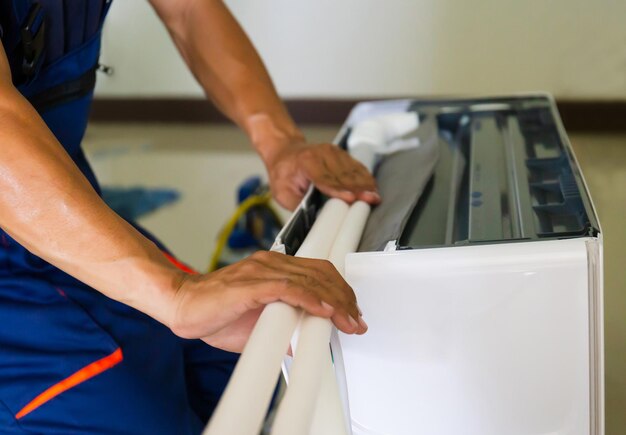How and Where to Buy Refrigerant for Your Refrigerator: A Complete Guide
Imagine you're preparing a delicious dinner for your family when you realize something is amiss—the veggies in your refrigerator are wilting, and your milk has turned sour. It's then you discover your refrigerator isn't cooling properly. One common culprit? Refrigerant issues. Whether you've been advised by a professional or you're a DIY enthusiast, knowing where and how to purchase refrigerant for your refrigerator is key to resolving such issues effectively.
In this article, you'll discover everything you need to know about buying refrigerant, often referred to as Freon, for your refrigerator.
The Refrigerant: Essential to Your Refrigerator's Functionality
What Is Refrigerant?
Refrigerant is a chemical compound crucial to the cooling process in refrigerators. It works by absorbing heat from the unit’s interior and releasing it outside, thus maintaining a low temperature inside the fridge. Over time, refrigerants can leak, leading to poor cooling and necessitating a refill.
Common Types of Refrigerant
There are several types of refrigerants, and knowing which one your refrigerator uses is vital:
- R-134a (HFC-134a): Widely used in modern refrigerators. Known for its efficiency and relatively low environmental impact compared to older refrigerants.
- R-12 (CFC-12): Once common, it's now largely phased out due to its high ozone depletion potential.
- R-600a: An isobutane refrigerant that's becoming more prevalent due to its eco-friendly properties.
Signs Your Refrigerator Might Need a Refrigerant Refill
- Inefficient Cooling: Food spoils faster than usual, or the interior isn't as cold as it should be.
- Motor Running Constantly: The compressor works harder to maintain temperature.
- Leaking or Oil Spills: Surrounding the unit, these might indicate a refrigerant leak.
If you notice any of these signs, a professional can help determine if a refrigerant refill is needed. However, if you're considering DIY, ensure you understand the next sections carefully.
Key Considerations Before Buying Refrigerant
Regulatory Compliance
Before rushing to purchase refrigerant, it's crucial to know about regulatory restrictions:
EPA Certification: In many regions, only certified technicians are legally allowed to purchase and handle certain types of refrigerants due to environmental safety regulations.
Proper Disposal: Used refrigerants must be disposed of correctly to avoid environmental harm.
Safety First
Refilling refrigerant involves potential exposure to harmful chemicals. Here are vital safety tips:
- Use Protective Gear: Gloves and eye protection are essential.
- Ensure Ventilation: Always work in a well-ventilated area to avoid inhalation of fumes.
- Avoid Open Flames: Refrigerants are flammable; hence, it's crucial to keep the area free from any ignition sources.
Where to Buy Refrigerant for Your Refrigerator
Local Retail Stores
Many local hardware and home improvement stores stock refrigerants. These are easily accessible and provide immediate purchase options. However, they might have limited types, focusing mainly on commonly used refrigerants like R-134a.
Online Retailers
With the rise of online shopping, purchasing refrigerant online is convenient and offers variety:
- E-commerce Platforms: Websites offer a wide range of refrigerants, often with customer reviews to guide your choice.
- Check Compatibility: Ensure you are buying the correct refrigerant type for your specific appliance.
Tip: Look for sellers that include detailed product information to verify compatibility with your refrigerator model.
Specialty HVAC Suppliers
For those who need specific refrigerants not found in regular retail outlets, specialized HVAC suppliers are ideal. They offer:
- Expert Advice: Staff can often provide valuable guidance about what product suits your needs.
- Wide Selection: Including lesser-known or environment-friendly options.
Professional HVAC Technicians
One of the most practical options is to hire a licensed HVAC technician. With this choice, you gain:
- Professional Assessment: They will confirm whether refrigerant replenishment is necessary.
- Guaranteed Safety: All safety protocols will be adhered to.
- Regulation Compliance: Professionals handle the refrigerant according to legal requirements.
Steps for DIY Refrigerant Refill
While hiring a professional is often recommended, here’s a simplified guide for those confident in their technical skills:
- Check Compatibility & Warranty: Ensure your refrigerant matches your refrigerator's specifications. Also, note that DIY actions might void warranties.
- Gather Tools: Necessary tools include a refill kit, gloves, goggles, and possibly a vacuum pump.
- Safety Precautions: Reiterate safety measures before starting the task.
- Locate Access Port: On most refrigerators, this is at the back and is known as the suction line.
- Attach Refill Kit: Connect as per kit instructions. Maintain a steady hand to avoid leaks.
- Refill Refrigerant: Slowly add refrigerant until appropriate pressure levels are achieved. It’s often beneficial to follow manufacturer guidelines or instructions.
Warning: Only attempt a DIY refill if you thoroughly understand the risks and procedures involved.
Key Takeaways: Your Refrigerant Purchase Journey
Here’s a simple summary of the process:
- 🔍 Identify Symptoms: Look for signs that indicate refrigerant issues.
- 🛒 Choose a Purchasing Channel:
- Retail Stores for accessibility.
- Online Markets for variety.
- Specialized Suppliers for specific needs.
- Professional Technicians for hassle-free service.
- 🔧 Ensure Safety: Prioritize safety and compliance with regulations.
- 📝 Confirm Compatibility: Match your refrigerator's requirements before buying.
- 📦 Consider Environment: Opt for eco-friendly refrigerants when possible.
The Final Word on Refrigerant
Understanding where and how to buy refrigerant involves knowing your refrigerant type, following safety protocols, and abiding by legal regulations. For many, hiring professionals remains the safest and most reliable option. However, if you choose to DIY, ensure you're confident in your understanding of the process.
Maintaining the refrigerant levels doesn't just enhance your refrigerator's efficiency; it prolongs its lifespan and keeps your household running smoothly. Here's to a fully functional fridge and fresher food! 🍎🥦
